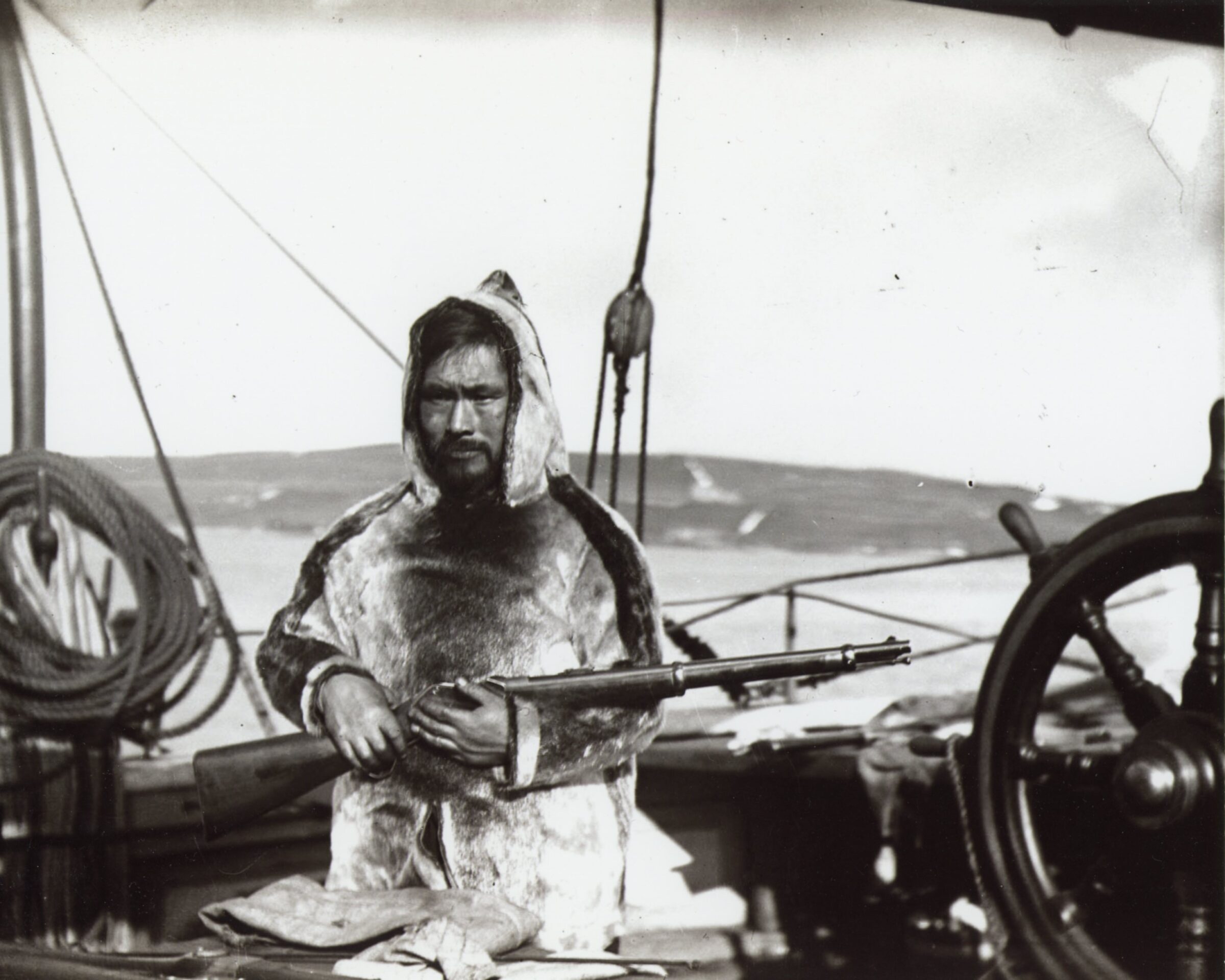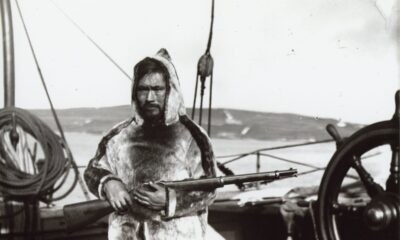Education
Etwango’s Journey Home: A Tale of Farewell and Reunion

In mid-March 1887, Etwango’s five-month stay in Dundee concluded with a heartfelt farewell from the community. He had made significant strides in learning English, earning a reputation as “a very quiet and inoffensive man” whose behavior was consistently “exemplary.” His presence had become familiar in the city, and many gathered at the docks to bid him goodbye, presenting gifts for him and his family.
Among the items he received was a rifle, a shotgun, and ammunition, purchased with approximately £17 collected by his friend, Capt. William Adams. Other gifts included a prayer book from a minister, though it proved unhelpful as he had not yet mastered English reading. Additionally, Mrs. Adams donated comforters and around 200 yards of flannel for Etwango’s wife.
The ship Maud made a scheduled stop in Lerwick, Shetland, where Etwango’s popularity continued to grow. Described as “the Eskimo chief” by the Shetland News, he donned traditional attire and showcased his skills in kayak paddling, drawing a crowd of approximately 2,000 people at Victoria Pier. He also participated in a performance at the town hall with Capt. Adams, demonstrating native songs and dances similar to those he had presented in Dundee, which earned him further gifts.
Following the Lerwick visit, the Maud journeyed to the Davis Strait, successfully capturing two bowhead whales and several walruses. However, ice conditions in Melville Bay forced the captain to alter their course, leading them towards the Baffin coast.
In the days leading up to their arrival home, Etwango exhibited signs of melancholy. Although he did not disclose his feelings, Capt. Adams speculated that the time spent in Dundee had left him longing for a different life than that of an Inuk. As the ship approached Durban Harbour, land-fast ice impeded their entry, prompting Etwango and some crewmates to traverse approximately 15 miles over the ice. They lit a fire as a signal for fellow Inuit, and soon, several members of his community arrived to welcome him.
Upon reuniting with his family, Etwango and his wife exchanged unemotional greetings, but he was overcome with joy at the sight of his daughter. His wife, initially reserved, expressed delight upon discovering the gifts sent from Dundee. Among the items was a melodeon, a type of button accordion, which she played to the astonishment of the ship’s crew. The tune, “There’s Nae Luck about the House,” a popular Scottish song, captivated them, along with another folk piece, “The Keel Row.” Reports suggested that she had learned to play several tunes during her time in Cumberland Sound, highlighting her musical talent.
Etwango had also brought a supply of petticoats for the women of the camp, which were eagerly donned over their sealskin dresses. Capt. Adams praised Etwango as “an honest, hard-working, warm-hearted fellow” and noted his skill as a sailor, asserting that his experiences in Dundee had instilled a sense of dissatisfaction with his previous way of life.
He expressed a desire to return to Dundee with his family the following year, but this aspiration was never realized. The subsequent year, Capt. Adams returned to Davis Strait, but upon checking on Etwango, he discovered the man in a state of “dejection.” His wife’s stepmother had moved in after her husband passed away, creating tensions that disrupted their household harmony. Reports indicated that while Etwango was away hunting, she persuaded his wife to leave for Cumberland Sound, taking with them most of the gifts Etwango had received from Dundee.
The Dundee Advertiser lamented the situation, stating, “It appears that the course of true love does not run any smoother among the Esquimaux than it does among more civilized people.” Grief-stricken, Etwango wished to return to Dundee aboard the Maud, but familial pressure kept him from doing so.
The following year, ice conditions once again prevented Adams from reaching Durban Harbour. Tragically, he passed away the subsequent year, leaving Etwango’s fate unknown. There are lingering questions about whether his wife returned or if he eventually made his way back to Cumberland Sound. The historical record remains silent on his later life.
This account is part of the Taissumani column, which reflects on significant historical events. Historian Kenn Harper, who spent over fifty years in the Arctic, authored this narrative. Harper has written extensively, including works such as *Give Me Winter, Give Me Dogs: Knud Rasmussen and the Fifth Thule Expedition* and *Thou Shalt Do No Murder*. Feedback and inquiries can be directed to [email protected].
-

 World3 months ago
World3 months agoScientists Unearth Ancient Antarctic Ice to Unlock Climate Secrets
-

 Entertainment3 months ago
Entertainment3 months agoTrump and McCormick to Announce $70 Billion Energy Investments
-

 Lifestyle3 months ago
Lifestyle3 months agoTransLink Launches Food Truck Program to Boost Revenue in Vancouver
-

 Science3 months ago
Science3 months agoFour Astronauts Return to Earth After International Space Station Mission
-

 Technology2 months ago
Technology2 months agoApple Notes Enhances Functionality with Markdown Support in macOS 26
-

 Top Stories2 weeks ago
Top Stories2 weeks agoUrgent Update: Fatal Crash on Highway 99 Claims Life of Pitt Meadows Man
-

 Sports3 months ago
Sports3 months agoSearch Underway for Missing Hunter Amid Hokkaido Bear Emergency
-

 Politics3 months ago
Politics3 months agoUkrainian Tennis Star Elina Svitolina Faces Death Threats Online
-

 Technology3 months ago
Technology3 months agoFrosthaven Launches Early Access on July 31, 2025
-

 Politics3 months ago
Politics3 months agoCarney Engages First Nations Leaders at Development Law Summit
-

 Entertainment3 months ago
Entertainment3 months agoCalgary Theatre Troupe Revives Magic at Winnipeg Fringe Festival
-

 Politics2 weeks ago
Politics2 weeks agoShutdown Reflects Democratic Struggles Amid Economic Concerns











